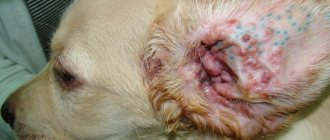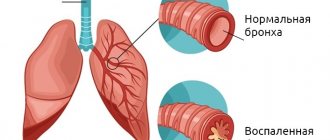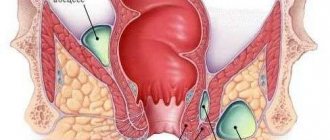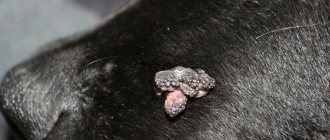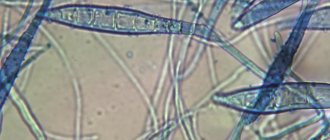Causes of the disease
Hyperadrenocorticism is associated with an increase in the concentration of cortisol in the blood plasma, and the increased level is observed for a long time. Cortisol is a steroid hormone, formed in the adrenal cortex under the influence of ACTH, produced by the glandular lobe of the pituitary gland. Functions of cortisol:
- sugar metabolism;
- regulation of blood pressure;
- management of stressful situations;
- anti-inflammatory effect;
- activation of the blood coagulation system.
Cortisol production is regulated by three systems. The hypothalamus produces a releasing factor, the action of which is directed to the pituitary gland. The latter organ is the main center for the regulation of all endocrine processes in the body. It produces adrenocorticotropic hormone, which regulates the functioning of the adrenal glands. Cortisol is formed in the cortex of the latter. Therefore, Cushing's syndrome can occur when any of the links in this chain are affected.
Cushing's disease is the most common metabolic pathology in older dogs.
The result is an increase in cortisol concentrations. The dog’s body forms a response to a stressful situation that in reality does not exist. Protection mechanisms are activated and continue to operate for a long period. All this leads to severe exhaustion - the dogs are depressed, and deviations from the norm are observed in many organs.
Cushing's syndrome occurs due to tumors in the pituitary gland (hormonally active tumors produce a huge amount of ACTH), a glandular tumor of the adrenal cortex, or external influences - improper treatment using steroid and glucocorticoid drugs. Most often, the disease is recorded in old animals, over 7 years old. In large dogs (weighing more than 20 kg) and females, Cushing's syndrome, caused by tumors in the adrenal glands, is more often observed. Hyperadrenocorticism caused by pathologies of the pituitary gland is more often observed in the following breeds of dogs:
- dachshund;
- Staffordshire Terrier;
- poodle;
- Jack Russell Terrier.
Iatrogenic hyperadrenocorticism is most rarely observed in dogs, when the pathology is caused by improper treatment, accompanied by long-term use of hormonal drugs, which leads to disorders in the adrenal cortex. More often in animals, pathology with damage to the pituitary gland is recorded; the adrenal form is noted in 20% of cases.
How to determine the effectiveness of treatment
The primary guidelines will be blood tests, ultrasound and x-rays. However, there are indicators that the owner himself can evaluate. This is primarily a reduction in the amount of water consumed by the dog. However, it must be taken into account that the animal may develop complications during the therapy. This is vomiting and increased weakness, lethargy and refusal to eat. Such symptoms may indicate concomitant disorders and diseases. Therefore, to get a clearer picture, it is necessary to conduct laboratory tests.
Clinical picture and diagnosis
The development of hyperadrenocorticism occurs slowly - the disease does not manifest itself for a long time. At this stage, the syndrome can only be detected by blood testing for hormone levels. When the pathology enters the stage of an open clinical picture, a variety of signs are revealed:
- dogs have a strong need for water;
- frequent postures for urination;
- the fur becomes brittle, hair falls out - hairless areas form, and often the entire dog becomes bald;
- depression, decreased mobility;
- weakening of the peritoneum – sagging, enlarged abdomen;
- reduction of adipose tissue, muscle atrophy;
- violation of sexual cyclicity, females go into estrus.
Although the symptoms of Cushing's syndrome are varied, the presence of a number of signs can make the doctor's work easier. So a number of symptoms for this type of disease are not recorded. So, if a dog experiences itching along with baldness, then this is most likely a parasitic or fungal pathology. With hyperadrenocorticism, dogs experience extreme thirst, but their appetite remains normal, and the animals do not experience vomiting or intestinal upset.
In rare cases, dogs show signs of damage to the nervous system - fatigue, poor mobility, lack of acquired reflexes (in trained animals). It is also possible to experience cramps and involuntary muscle contractions. As a rule, the pelvic limbs are affected.
Blood counts for Cushing's syndrome:
- a decrease in the number of lymphocytes, lymphopenia is caused by cell destruction by steroids;
- slight erythrocytosis and thrombocytosis;
- increase in the proportion of neutrophils;
- increased levels of alkaline phosphatase.
Additional and special research methods
The diagnosis of Cushing's disease can be clarified using many modern diagnostic methods. Most often in practice, ultrasound and x-ray examinations are used. An x-ray shows salt deposits on the inner lining of the respiratory tract - bronchi, trachea, the liver is enlarged, the abdominal wall is stretched.
Ultrasound allows you to examine the adrenal glands and assess the damage to this organ. Ultrasound also detects metastases and lesions of other organs. Increasingly, computer and magnetic resonance imaging scanners are being used to examine dogs, allowing them to examine the pituitary gland and hypothalamus.
Functional test with ACTH:
- initial determination of the level of cortisol in the blood;
- intravenous injection of 0.25 mg ACTH;
- re-determination of cortisol levels after 30-60 minutes;
- Cushing's syndrome is confirmed if cortisol levels increase by more than 600 nmol/l.
Therapy
To confirm Cushing's syndrome in a dog, symptoms and treatment, a veterinarian focuses on the laboratory method. Diagnostics includes detailed blood and urine tests. Specific tests, x-rays, and ultrasounds are also performed to confirm the diagnosis.
The treatment system offers two methods: surgical and medicinal. Either one or both adrenal glands are removed at once (depending on the location of the tumor), and the animal is transferred to hormone therapy. Or they prescribe medications to control cortisol levels. These drugs are quite expensive. Often, hyperadrenocorticism is not completely cured.
Therapeutic and surgical treatments
Treatment of Cushing's syndrome allows you to prolong the dog's life and relieve it of a number of pathological symptoms. The choice of therapeutic assistance is based on the results of the study, the cause of the pathology (damage to the pituitary gland or adrenal glands). Therapeutic care should be provided only to animals with clinical manifestations of the disease - the results of laboratory tests should be used exclusively to monitor the course of the disease. If your dog shows no visible changes, treatment may worsen its condition.
The radical treatment method is surgery. The most difficult case is damage to the pituitary gland. In this case, it is necessary to remove the tumor from the brain. Veterinary specialists have little experience in this area. All over the world, only a small number of clinics perform such operations, but 86% of dogs successfully underwent the operation, and 80% of those operated on survived to 2 years of rehabilitation. Surgery on the pituitary gland has a number of negative aspects:
- high cost;
- lack of qualified specialists;
- lifelong treatment with hormonal drugs;
- high risk of developing diabetes insipidus.
With the development of Cushing's syndrome due to damage to the adrenal glands, surgical intervention is a more appropriate method. The operation is not as complicated as when affecting the pituitary gland, but also requires a certain development of skill by the doctor. When the adrenal glands are removed, there is a high postoperative mortality rate, the development of metabolic disorders in animals and other complications.
Therefore, the best treatment method is drug therapy. The most commonly used drug is mitotane, which has a destructive effect on the cells of the adrenal cortex. Treatment regimen:
- give only with food;
- dosage at the beginning of treatment – 12 mg/kg, twice a day;
- therapy is carried out until the clinical picture disappears;
- for maintenance, the drug is given with food at a dose of 2 mg/kg once every 3-4 days.
Mitotane allows you to extend the life of a dog by 1.5-3 years. The drug is taken for life. As an alternative, the drug trilostane is used, which suppresses the production of hormones by the adrenal cortex. Dogs are given the drug with food at a dose of 3-6 mg/kg once a day. The first treatment control is carried out after 1-2 weeks, noting the level of cortisol in the blood. If the effectiveness of therapy is not observed, the dosage can be increased. In the future, the blood is studied every 3-5 months; if the cortisol level drops sharply, it is recommended to stop giving the medicine.
Other medicines do not show reliable effectiveness and their use is not recommended. In addition, any treatment must be accompanied by regular clinical and laboratory tests to monitor the animal’s condition and the quality of care provided. But it should be remembered that it is impossible to completely cure hyperdrenocorticism - therapy can only delay death for a couple of years .
It is also possible to use radiation therapy for pituitary tumors. This method can replace surgical intervention, as it eliminates the cause of the disease (as opposed to drug treatment) and does not require large special skills. But the mechanism of radiation therapy for the syndrome has not been fully developed - the effect on surrounding tissues remains, and the dosage of radiation has not been fully tested to avoid consequences.
Predisposition
There are certain breeds in which this disease occurs more often than in others. Thus, boxers and terriers of all types are at risk. This also includes dachshunds, beagles, poodles and basset hounds. Most often, adults who are 7-10 years old are susceptible to this disease. At this age, doctors can only maintain the condition of the body as much as possible. However, Cushing's syndrome is also diagnosed at a fairly young age - in dogs under two years of age. The disease is very dangerous because it affects all organs and systems at once, and therefore, without proper treatment, there is a high probability of death of the animal, as well as a serious reduction in life expectancy with adequate treatment.
Diagnosis of Cushing-Itsenko disease in dogs
Diagnosing hyperadrenocorticism begins with a thorough examination. With severe symptoms, it is enough to make a diagnosis. The next step is functional tests. They are based on the administration of dexamethasone and the hormone ACTH, which allow assessing the condition and functioning of the adrenal glands.
When diagnosing, an abdominal ultrasound is prescribed. Based on the results obtained, it will be possible to determine the presence of tumors or an increase in the size of the adrenal glands. To identify tumors of any nature in the pituitary gland or adrenal glands, MRI or CT is used (provided that these forms of diagnosis are available).
We recommend regularly visiting a veterinary clinic for diagnostics. The earlier Cushing's syndrome is diagnosed, the more effective further treatment will be.
Forecast
Cushing's syndrome is an insidious disease that weakens all body systems. It disrupts the functioning of vital organs and reduces immunity to parasitic and bacterial infections. Therefore, doctors do not often give an optimistic prognosis. The average life expectancy of a dog after detection of the syndrome is about 3 years. But good care and care can extend the life of a pet for several more years.
Prevention
It is possible to prevent the disease; to do this, it is enough to give your pet sufficient physical activity and properly structure its diet. Routine examinations by a veterinarian can also detect the onset of the syndrome or identify it in the early stages.
Pet's future
Alas, this is not a curable disease and no one can avoid its consequences. Proper treatment will allow your pet to live 3 or 4 years without pain.
Don't be upset if this disease is confirmed. The dog has several more years of life ahead, and only you can determine what it will be like. Give her the opportunity to spend this time happily with her beloved owner.
Symptoms
Hyperadrenocorticism develops slowly in 80-85% of cases. Cushing's syndrome has a negative impact on many vital systems, so symptoms can vary significantly between dogs.
The main symptoms indicating the development of pathology:
- Unquenchable thirst (as a result, increased urination). The most common sign of the disease. The dog begins to drink at least 2 times more than usual;
- Sagging abdominal muscles. The abdominal area increases significantly in size due to the removal of fat deposits into this area. All this leads to exhaustion of the abdominal muscles and a decrease in their tone;
- Baldness. Hair loss begins in the flanks and abdomen, then spreads throughout the body. In the final stages of the disease, hair remains only on the head and limbs.
- Lethargy, loss of sleep. In some cases, strange and unbalanced behavior is noted that is not characteristic of a healthy animal.
- Darkening of the skin. Sick dogs experience pigmentation, severe acne and subsequent peeling of the skin in areas of baldness.
- Dysfunction of the reproductive system. In females, the sexual cycle is disrupted, and estrus gradually disappears. In males, atrophy of the testes is observed.
- Other signs: shortness of breath, constant feeling of hunger, dull coat, lack of calcium in the body.
Note! Cushing-Itsenko syndrome is often mistaken by dog owners for signs of aging.
If you notice even a few signs in your pet, we strongly recommend scheduling a consultation with an experienced veterinarian!
Symptoms
The hormone cortisol affects the functions of the dog’s entire body, so Cushing’s syndrome affects almost all systems:
- immune;
- genitourinary;
- musculoskeletal;
- reproductive;
- nervous;
- cardiovascular.
Other glands also change their normal production of hormones, so the kidneys, liver and skin may be affected. The syndrome develops gradually, but the first symptoms you may notice are the following:
- excessive appetite;
- increased thirst and, as a result, frequent urination;
- alopecia (appearance of bald patches in the kidney area).
